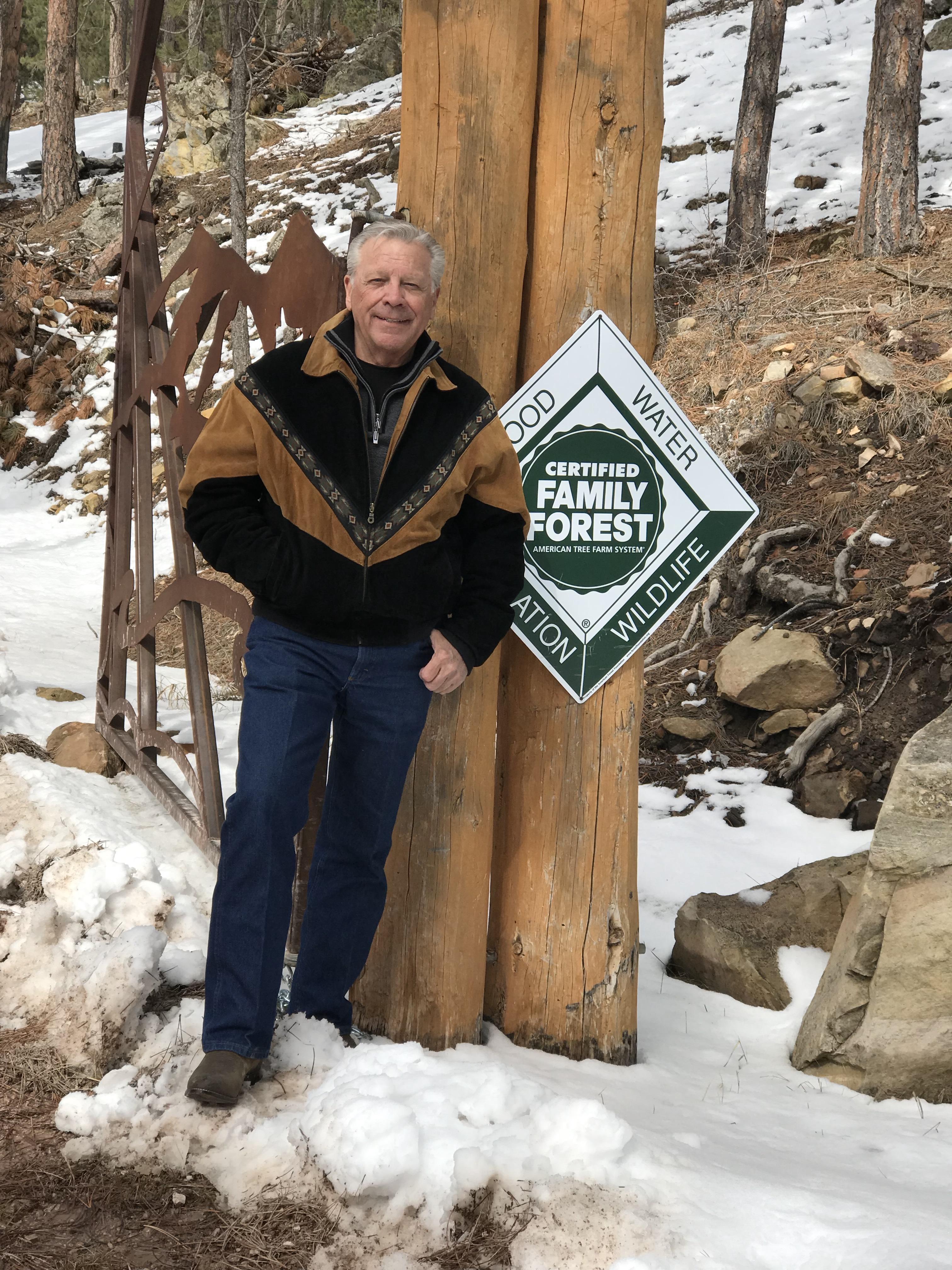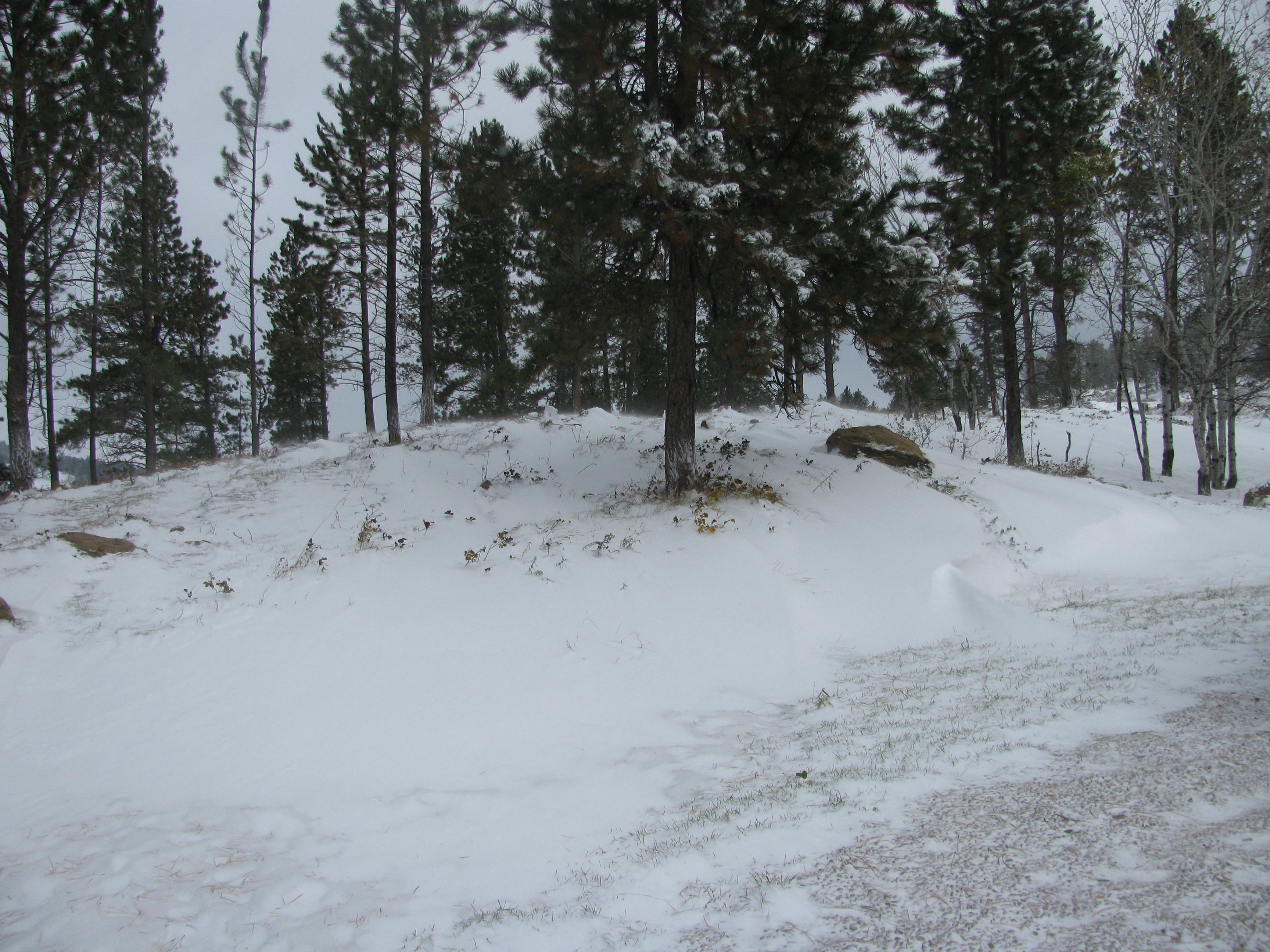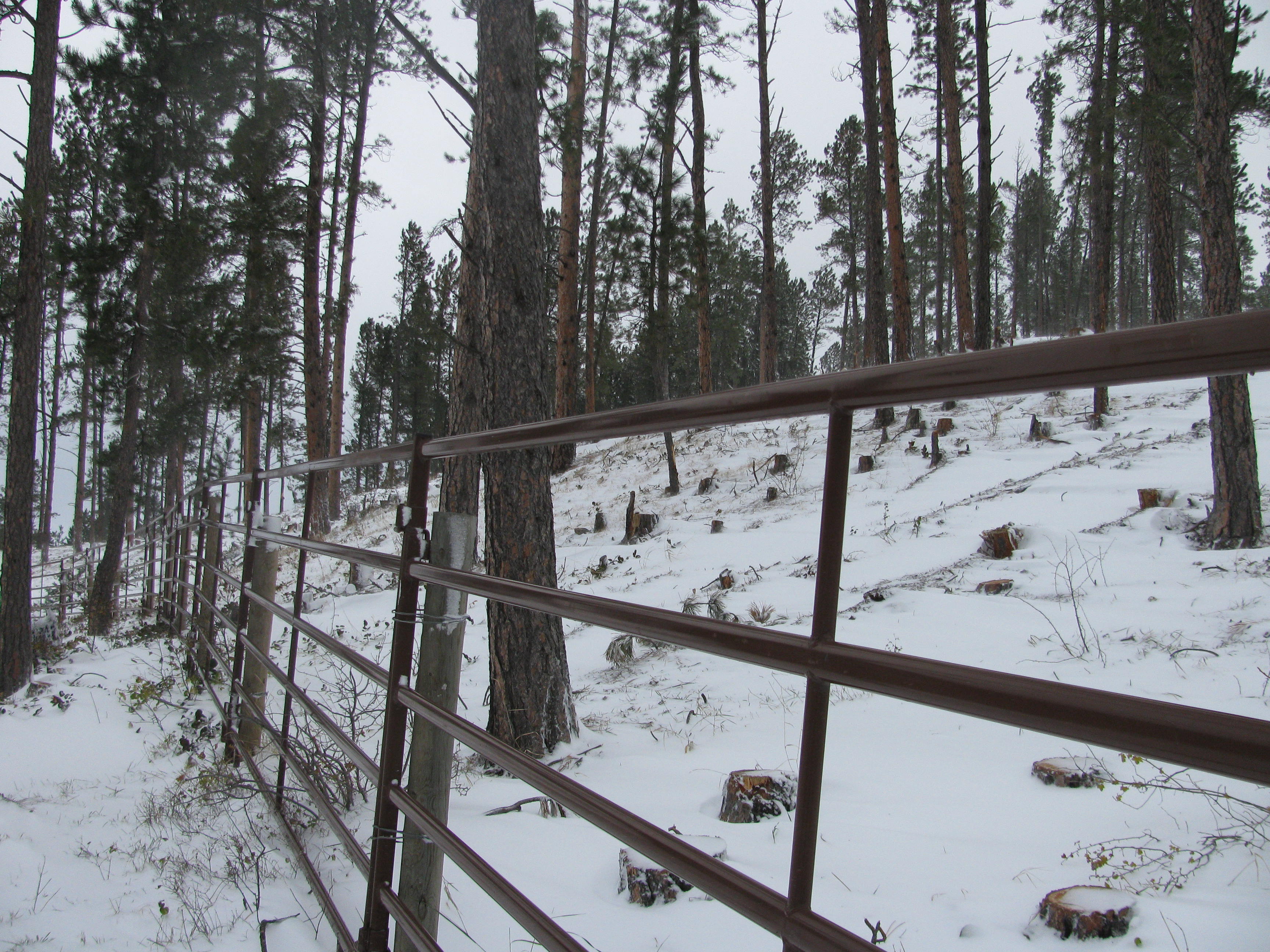West Nominee: Jerry Riggs from Wyoming
What makes them outstanding?
Jerry Riggs with Big Medicine
Ranch of Weston County if deserving of Tree Farmer of the Year  award due to the
impact he has made for management in his geographical area. Jerry has done a
lot to get good forest management on the ground, not only on his place but also
on state ground, and convinced neighbors, that previously were anti-logging, of
the importance of forest management, which resulted in them doing management on
their own land. He has served as a
leading advocate to forest management and been an excelling role model to the
local forest landowners in his local county.
award due to the
impact he has made for management in his geographical area. Jerry has done a
lot to get good forest management on the ground, not only on his place but also
on state ground, and convinced neighbors, that previously were anti-logging, of
the importance of forest management, which resulted in them doing management on
their own land. He has served as a
leading advocate to forest management and been an excelling role model to the
local forest landowners in his local county.
Jerry was proactive in his management decisions, immediately upon purchasing his property, to help defend the area from the mountain pine beetle epidemic and the high risk of wildfire in the area. He immediately went to work planning his forest management and plunged forward by being the lead landowner with promoting landowner management in the area.
To get the management accomplished Jerry calmed fears of the landowner association, took some liability upon himself, helped coordinate access and the harvest of the timber in the land development area. To follow through with his forest management he hired a forester to administer the thinning, slash burning and fuel treatment on his acreage. He continues his management implementation today as a role model to his neighbors, as well as to his son. His son has purchased acreage to expand the overall Tree Farm for generations with adjoining acreage.
Tree Farmer story
Jerry bought the 928 acre Big Medicine Ranch, which was the majority land holding of the Elk Grove subdivision, in 2012. As soon as he took ownership his place was threatened by one of the largest fire of the area. Also during this time the mountain pine beetle epidemic was in full swing as well. Jerry could see the importance of forest management and signed up to become a tree farmer shortly after the purchase of the ranch.
The State of Wyoming has state trust land parcels to the north, east, and west of the Elk
Grove subdivision. In an
effort to combat the mountain pine beetle epidemic Wyoming State Forestry put
up and sold timber sales on the parcels. Before the sale was cut the land
ownership to the north, where access for a large portion of the timber sale was
agreed upon, was sold. The new owner refused to allow the mill to haul across
him shutting down the access to the north. The mill and State Forestry had
multiple meetings with the Elk Grove home owners group trying to secure access
across the Big Medicine Ranch (Jerry’s predecessor) and the Elk Grove Trail.
Talks were not going well and it was looking like we would have to eliminate a
large portion of the sale and the use of the Elk Grove Trail was going to be so
restrictive that it might not have been feasible.
Forestry put
up and sold timber sales on the parcels. Before the sale was cut the land
ownership to the north, where access for a large portion of the timber sale was
agreed upon, was sold. The new owner refused to allow the mill to haul across
him shutting down the access to the north. The mill and State Forestry had
multiple meetings with the Elk Grove home owners group trying to secure access
across the Big Medicine Ranch (Jerry’s predecessor) and the Elk Grove Trail.
Talks were not going well and it was looking like we would have to eliminate a
large portion of the sale and the use of the Elk Grove Trail was going to be so
restrictive that it might not have been feasible.
After Jerry bought the Big Medicine Ranch, he calmed all the fears of the Landowners Association burdening some of the liability on himself trusting that the Mill and the State would keep their word on fixing the roads as good as or better than they were. The State was able to gain access through the Big Medicine Ranch and not only log the 1737 MBF in the original sale but also add an additional 2168.489 MBF. Jerry logged his place using the same prescription that the State used on their sale. Through his good example of forest management and explanation of the importance of forest management, he was able to change the mindset of a neighbor that was literally up in arms against logging to not only allow the State to access their timber but to do forest management on his own land.
Jerry not only harvested the timber, but hired a Forester to oversee the follow up thinning, the burning of piles and the placement of fuel breaks and the fuel treatments not only to protect his ownership but also the State and all of the other neighbors. He continues to be a good Steward of his land following all BMPs, treating weeds and is working toward finishing up thinning and fuel treatment on all of his ownership.
The end result is through all the forest management in the area the mountain pine beetle epidemic was stopped in its tracks, the Elk Grove subdivision is a lot more defensible against a wild fire. The Wyoming State Forestry continues to have a good working relationship with Jerry which has allowed them to treat the slash and do follow up thinning and fuel treatment on the State land and sell 3905.489 MBF of timber for the common school fund.
For the following areas describe how the landowner's management addresses it
Wood: Jerry started the timber improvement portion of his management plan (4/2013) by signing a timber harvest contract soon after he purchased this ownership. Over a three year period, commercial harvesting was completed on about seventy five percent of his forested land. The majority of his harvest was a shelterwood harvest leaving approximately fifty square feet of basal area stocking. Other areas(less than five percent) was removal of pine from or near aspen stands or seed tree harvests. One hundred sixty six loads of commercial logs (5300 tons/ 702 MBF) were removed from this ownership. Results of this timber sale met the owner’s objective of promoting forest health. The area mountain pine beetle epidemic was brought under control and fuel loading was reduced. The harvest will result in increased timber and forage growth, more ground and surface water supply, and a diversity of forest stands for wildlife. Also, the aesthetics of the property have been improved.
Water: An increase in the amount
of water reaching the ground from results of the timber harvest can be seen in
the increased forage production and the increased water in the springs and
ponds located in the harvest areas.
Jerry has also worked on improving spring water availability for both livestock and wildlife. He improved the
functioning of three springs near the
Sweetwater Creek running through his ranch.
livestock and wildlife. He improved the
functioning of three springs near the
Sweetwater Creek running through his ranch.
Wildlife including threatened and endangered species: This property provides habitat for several species of birds and animals. Species expected to occur include: mule deer, whitetail deer, elk, mountain lion, bob cat, coyote, red fox, porcupine, skunk, cottontail rabbit, red squirrel, marmot, least chipmunk, mice, voles, Merriams' turkey, sharp tail grouse, turkey vulture, red tail hawk, golden eagle, American kestrel, sharp shinned hawk, black-capped chickadee, slate-colored junco, white-breasted nuthatch, red-breasted nuthatch, hairy woodpecker, downy woodpecker, pine siskin, evening grosbeak, mountain bluebird and American robin.
The following species are listed as threatened or endangered in Weston County; Black-footed Ferret (Mustela nigripes), Blowout Penstemon (Penstemon haydenii) Ute ladies’ tresses (Spiranthes diluvialis) and northern long-eared bats (Myotis septentrionalis). The first three of these are not expected to occur on this property due to lack of habitat requirements and were not observed during site visits. No known occurrence or presence of northern long-eared bat has been observed. Under the Northern Long-Eared Bat 4(d) Rule for Non-Federal Activities this property is located outside of the white-nose syndrome zone and management activities do not include purposeful take, thus the landowners may proceed with forest management activities without a permit and without contacting the U.S. Fish and Wildlife Service (U.S.D.I 2016).
U.S.D.I. U.S. Fish and Wildlife Service. 2016. Key to the northern long-eared bat 4(d) rule for non-federal activities.
Jerry has made several improvements to help wildlife species. He has improved forage quantity, quality, and species diversity through his timber harvests and thinning. Jerry’s improvements to his springs have already supplied an increase in water availability. Jerry has plans to improve more quantity and quality of water in his springs, ponds, and dams. Jerry has an annual weed control program to improve range and forage diversity and production. Jerry has plans to improve the aspen stand conditions on his ranch.
Recreation and Aesthetics including special sites: Jerry has significantly improved the aesthetic beauty of his mid-range elevation, open meadow and diverse forest ownership containing all ranges of slopes (0-80 %) and aspects. He enjoys his ranch with both family and friends. He really enjoys taking friends and family (either by horseback, hiking, or four wheeling) on tours of the Big Medicine Ranch.The variety of land form, species mix, texture and color range all contribute to pleasant scenery in the Black Hills. Natural forest openings and cultural activities such as ranching all add to the diversity which is essential to enjoyable esthetics.
A sites of special interest identified on this property is the area around the land owners home.


